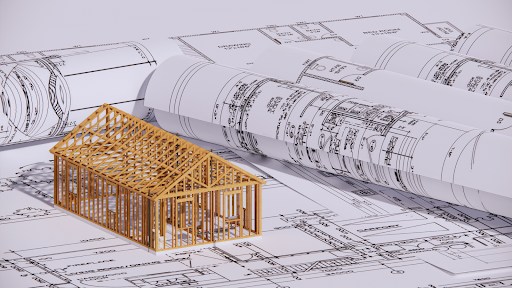By Antonia Egli and Radhika Deorukhkar (Dublin City University) and edited by Omar Doukari, Enrico Scoditti, Mohamad Kassem, and David Greenwood
What is the BIM-Based Techno-Economic Assessment (TEA) Framework?
The RINNO study “A BIM-Based Techno-Economic Framework and Tool for Evaluating and Comparing Building Renovation Strategies” proposes a novel solution for disturbances to occupants during the deep renovation process: the Techno-Economic Assessment (TEA) framework and its associated digital tool. This framework was created to help project teams manage how building occupants affect renovation work, and to speed up major upgrades.
The research clarified what ‘disruption’ really means in this context by developing a clear renovation vocabulary and mapping the key processes using visual modelling tools. The TEA tool uses Building Information Modelling (BIM) to automate the way renovation knowledge is processed. BIM helps simplify complex project information covering tasks, constraints, costs, timelines, equipment needs, and potential disruption. This information was gathered and refined through workshops with 18 industry partners across 10 EU countries. The framework was then tested in a real project: the renovation of a multi-residential apartment building in Greece.
What are the Key Insights from the Renovation Disruption Study?
The study’s findings, based on real-world industry data and advanced construction technology, provide crucial insights for planning renovation projects.
- Questioning Traditional Planning: The research challenges two long-standing renovation heuristics. Firstly, it questions the suggestion to prioritise the most disruptive activities early in the project. Secondly, it questions the preference for a ‘one-off’ renovation strategy, which recommends completing all work as quickly as possible.
- Disruption is Not Always Tied to Location: The findings indicate that there is no spatial correlation for the disruption concept. This suggests that a task’s level of disruption cannot be predicted based purely on where it takes place within a building.
- Floor Renovation is Highly Disruptive: The study confirms that building floor renovation has a highly disruptive nature. This factor can lead to a low rate of retrofitting them.
- The Four Key Disruption Categories: Industry partners validated only four primary types of disruption that impact occupants. These are Disruption of Traffic, Utilities, Physical Space, and Internal Environment (e.g., noise, dust, vibration).
- Quantifying the Hidden Cost: The research notes that project disruption can increase costs by up to 12%. The TEA framework manages disruption levels, which are classified as ‘No impact/downtime’, ‘Low impact’, ‘Medium impact’, and ‘High impact’, with corresponding communication flags like “Take action!”.
How Does This Construction Technology Impact Real-World EU Renovation?
The main value of the TEA framework lies in its ability to take abstract project variables and turn them into actionable plans for industry professionals.
The problem is particularly acute in Europe, where 77% of residential buildings were constructed before 1990. Achieving the European energy-saving and decarbonisation goals by 2030 and 2050 requires a far greater rate of deep renovation. The TEA tool directly supports the goal of Sustainable Construction by enabling the assessment and optimisation of renovation scenarios based on measurable Key Performance Indicators (KPIs).
These KPIs cover vital project parameters, including project duration, project cost, average daily workers, and the overall disruptive potential. For a project manager, this means the difference between simply seeing a cost estimate and seeing the cost and the calculated level of noise and dust for every week of the project. This automation, powered by advanced Construction technology, allows them to select the optimum scenario that minimises occupant discomfort, potentially saving costs that disruptions would otherwise cause.
A Case in the EU: The framework was tested and applied to a multi-residence building in Greece, where three different renovation scenarios were evaluated and compared. Looking ahead, the TEA framework will be further demonstrated and tested by end-users across three additional EU demonstration sites within the RINNO project: Denmark, France, and Poland. This final testing will help validate the added value of the tool from a practical, user-centric perspective.
Why is Blending BIM and Data Key for Sustainable Construction?
The future of building renovation demands a shift from reactive problem-solving to proactive, intelligent planning. By formalising and quantifying disruption, the TEA framework provides a machine-readable plan to accelerate efficiency in the construction industry. This approach, blending BIM with techno-economic assessment, is a powerful new asset. Its widespread adoption through projects like RINNO is key to meeting Europe’s decarbonisation targets without generating high costs or undue stress for building occupants.
Reference:
Doukari, O., Scoditti, E., Kassem, M. and Greenwood, D. (2023) ‘A BIM-based techno-economic framework and tool for evaluating and comparing building renovation strategies’, Journal of Information Technology in Construction, 28, pp. 246–265. doi:10.36680/j.itcon.2023.012.


 This project has received funding from the European Union's Horizon 2020 research and innovation programme under grant agreement No 892071.
This project has received funding from the European Union's Horizon 2020 research and innovation programme under grant agreement No 892071.